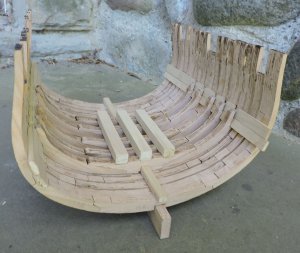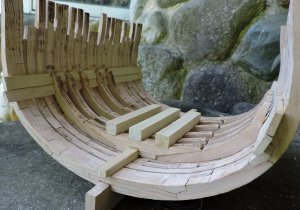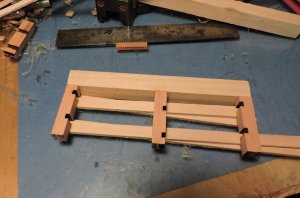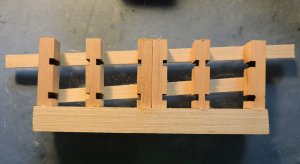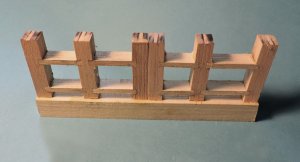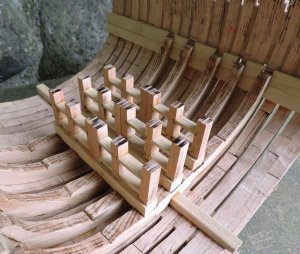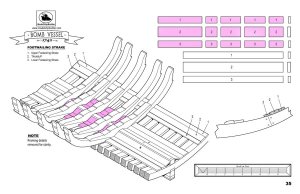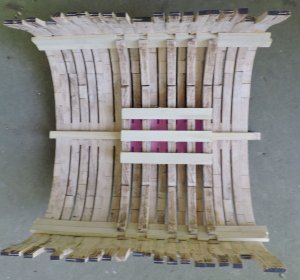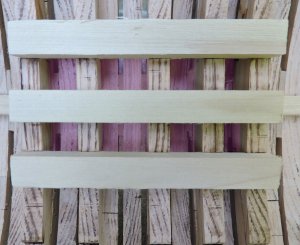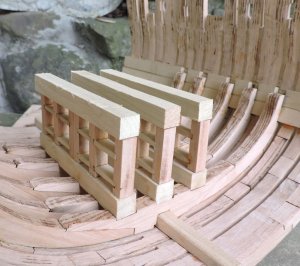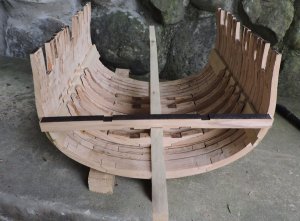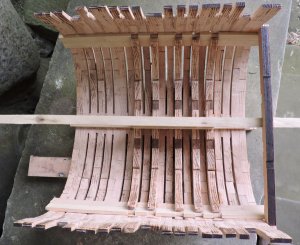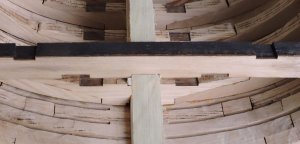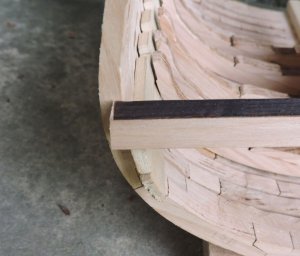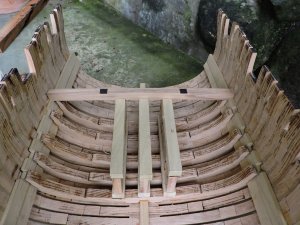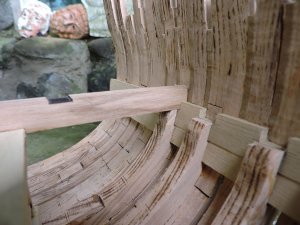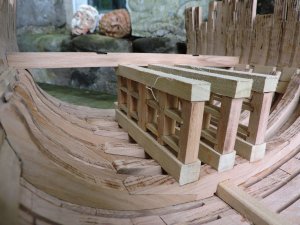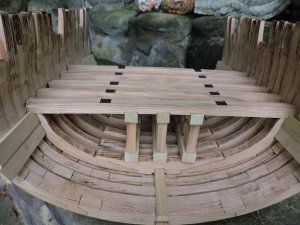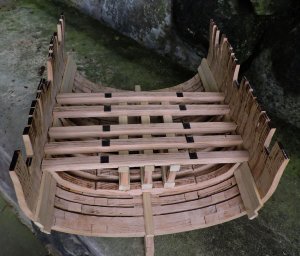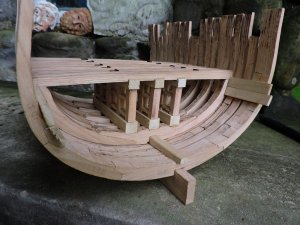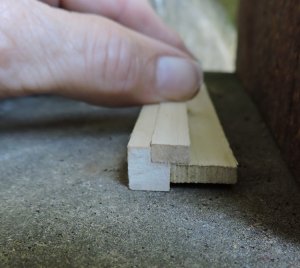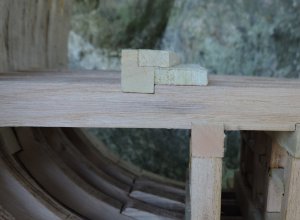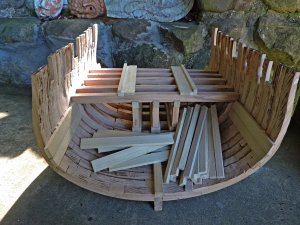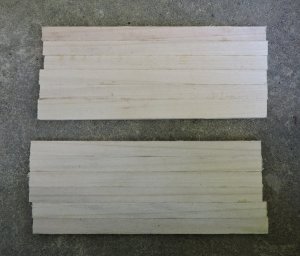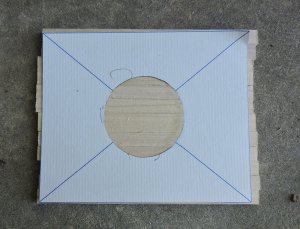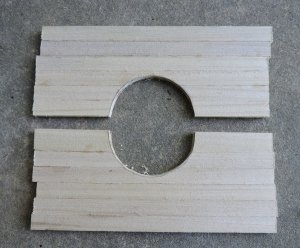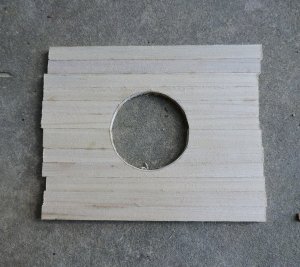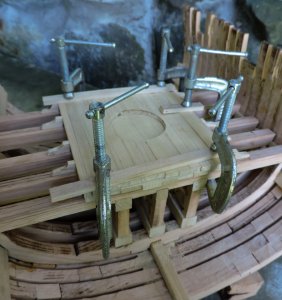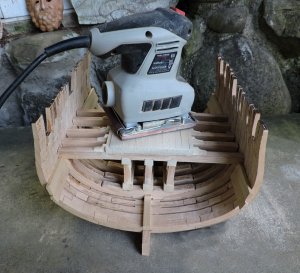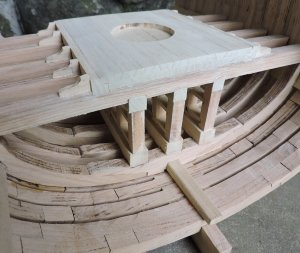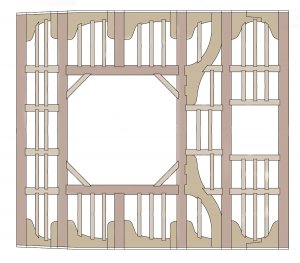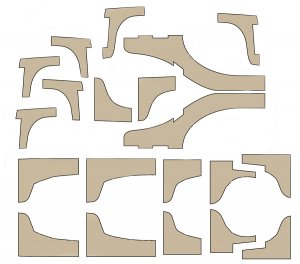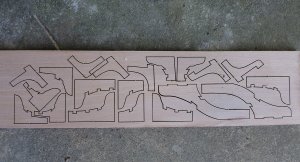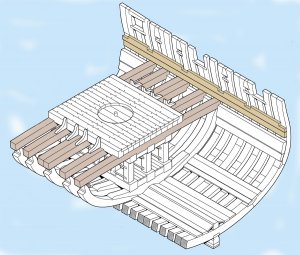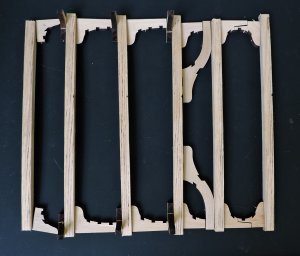back to the build it is time to build the platform for the mortar
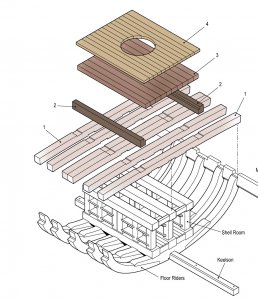
this is what it looks like
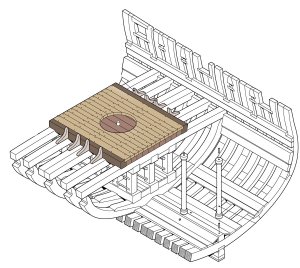
it is a double platform with the plank seams staggered for straight.
Starting with the two end timbers i cut them to fit into the notches then took the two end planks and edged glued them to the inside of the end beam. i just used a dab of glue between the deck beams because i do not want to glue the pieces to the beam, i will remove the pieces once the glue sets.
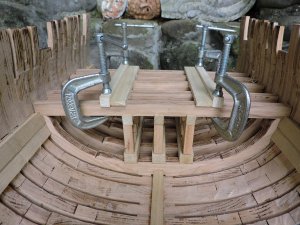
I removed the piece to cut a notch along the inside edge so the upper plank overlaps the seam between the end beam and lower plank.
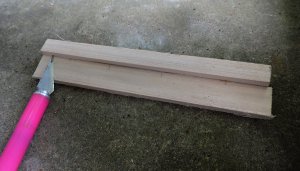
i flipped the piece and used the top plank as a guild for the second cut.
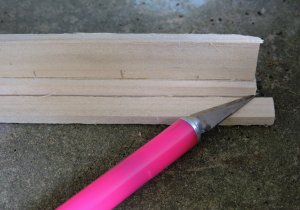
when cutting something like this i always will make a light first cut to score the surface and then using more and more pressure until the cut is deep enough. You can see the difference from the first to the last cut
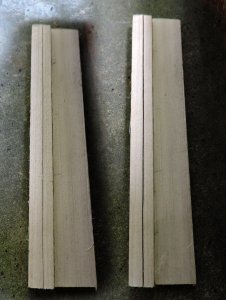
and the piece pops out.
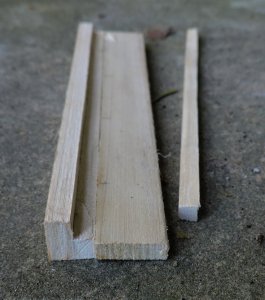
if you have a small table saw you could set the height of the blade and cut the notch in the beam. There are a lot of model builders out there who do not have these expensive tools. some groups out there insist you need all these expensive power tools to build models, i say no you don't everything can be done by hand, not as fast but none the less it can be done.
Another way i have cut these type of notches is to whittle them out piece by piece.
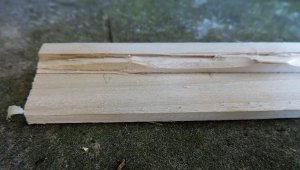
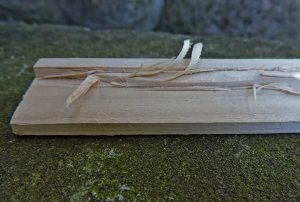
Another thing is the wood you use, again some groups when asked by beginners what wood to use they will quickly say Boxwood Pearwood and other expensive exotic woods. I will tell you from experience cutting that notch in Boxwood will take a long time because the wood is very hard. I have also heard it said i would never be caught using Basswood or softer woods in a model because the wood is a bad choice, that is just babble coming from people who do not consider the full range of model builders from beginners with a very limited range of power tools and experience in wood working. I have seen some beautiful work done by professionals who use everything from Pine to Basswood to fine exotic woods.

